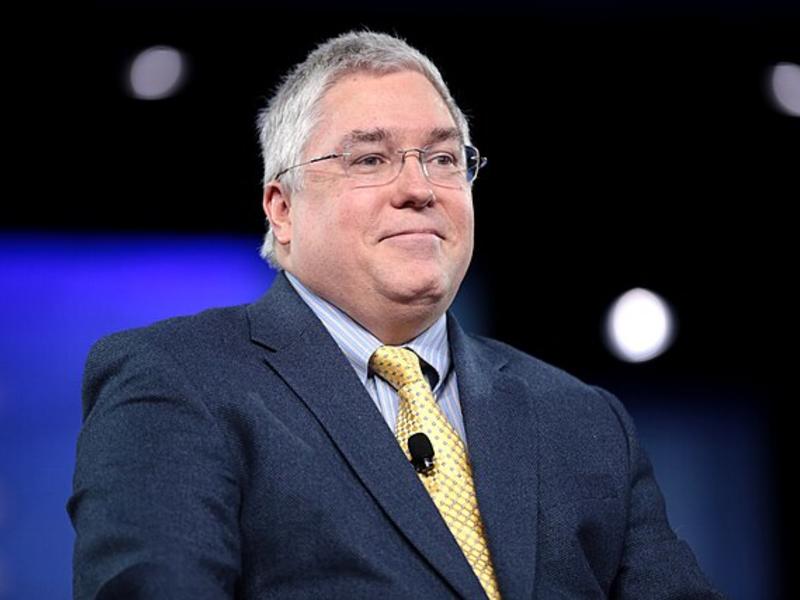
Most economists expected to go through their entire careers not seeing economic reports as discouraging as those regularly seen now. Congress has already passed an unprecedented $2.3 trillion in economic stimulus, and it's about to add another half trillion to $1 trillion worth by the end of next month. The Federal Reserve Board has injected about $6 trillion in liquidity into our economy, enough to give every previous Fed board member heart palpitations. And yet more is certainly to come.
The unknowns, in both economics and epidemiology, are something the country and the world have been trying to grapple with for the last three or more months since this pandemic began. Uncertainty rules the day.
Politically, however, we can be certain about a couple of things. For starters, Donald Trump cannot run for president in 2024 unless he loses this year and decides to mount a comeback four years from now. That means that the jockeying will begin soon among Republicans for who will lead their party four years from now.
But the Republican Party is facing some monumental challenges in the not-too-distant future, which could make that a daunting task.
- In a country that is quickly becoming more ethnically diverse, the Republican Party has doubled down on its reliance upon white voters for support. In 2016, 87 percent of Trump’s vote came from whites. For congressional Republicans in the 2018 midterms, it was 86 percent. Is this sustainable?
- In a country that is getting more urban and suburban, the GOP has become dependent upon rural and small-town support. Where did Democrats score huge gains in 2018? In suburbs, usually the fast-growing ones outside places like Atlanta, Dallas, Houston, Kansas City, Oklahoma City, and Richmond—and that’s mostly just in the Sun Belt. For their part, Republicans have been doing well in places with shrinking populations and economic growth, like the industrial Midwest. Can the GOP thrive under these conditions?
- In a country growing increasingly secular, with fewer going to church regularly, the GOP has come to rely on the support of dwindling numbers of Evangelical Christians and conservative Catholics. Is this a long-term strategy?
- The Republican Party has come to rely heavily on the support of the "silent" (born between 1928 and 1945) and baby boom (born between 1946 and 1964) generations. In the 2016 election, 63 percent of Trump’s vote came from voters 45 years of age or older. Hillary Clinton’s vote was more evenly balanced, with 52 percent of her support coming from voters 45 or older. In the 2018 midterms, it was even more lopsided: 72 percent of those who voted Republican for Congress were 45 or older; for Democrats it was 59 percent. What are Republicans going to do when there are few silent and baby boom generation voters left and elections are dominated by those from Generation X (born 1965-1980), millennials (1981-1996), and Gen-Zers (1997-2012).
After the GOP lost its second consecutive presidential race in 2012, the Republican National Committee issued the “Growth and Opportunity Project,” better known as the “autopsy report,” that delicately addressed what lay ahead for the party. To be fair, the party did take to heart the report’s recommendations on modernizing its use of the internet and social media; indeed, the GOP took the lead in all things digital in the 2016 election. In terms of broadening the party’s reach, however, it went in the opposite direction of the report, as Trump ran a base-first campaign.
Despite Trump’s 2016 win, it is not hyperbole to say that unless things change, Republicans are headed into what could be called a demographic death spiral.
So what will the Republican Party look like in a post-Trump or in a near-post-Trump era? Once Republicans nominate someone else in 2024 and 2028, the GOP could have an entirely different look. Among those mentioned as possible contenders for the Republican nomination are Sens. Tom Cotton, Ted Cruz, Josh Hawley, Marco Rubio, and Rick Scott; Vice President Mike Pence; Secretary of State Mike Pompeo; and former United Nations Ambassador Nikki Haley. Many of those could theoretically help the party redefine and reposition itself.
But remember that as they seek their party’s nomination, they will have to court a base that looks more like what they need to move away from than where they need to move to. With ideological activists playing outsized influence in the process, working to expand and diversify is hardly the path of least resistance. While President Reagan liked to talk about his inclusive, “big tent” approach to politics, what we have seen of late has not been the big-tent variety.
For the better part of the last four years, President Trump has been the sun, with the rest of the political solar system revolving around him, particularly in his party. Escaping that gravitational pull will be critical not only for the nominee but also for the GOP—particularly given that Trump is unlikely to retire from public life. Or public comment.
This story was originally published on nationaljournal.com on May 8, 2020










Subscribe Today
Our subscribers have first access to individual race pages for each House, Senate and Governors race, which will include race ratings (each race is rated on a seven-point scale) and a narrative analysis pertaining to that race.